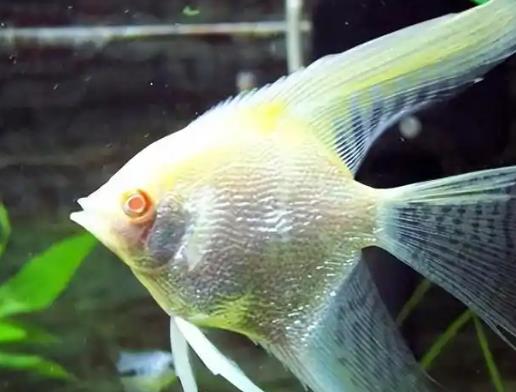The common diseases of angelfish include the following:
Enteritis: This is one of the most common diseases among angelfish. Symptoms include a darkened body, loss of appetite, rubbing the abdomen against the bottom of the tank, and a swollen belly. For treatment, you can use ofloxacin for a medicinal bath. Change the water daily and adjust the water temperature to between 28 °C and 30 °C.

Gill Rot: Caused by bacterial erosion, it manifests as the gills turning white or even rotting, resulting in difficulty in breathing and slow movement. Treatment can involve using potassium permanganate or furacilin for a medicinal bath and adding an appropriate amount of salt to the water.
Cotton Mouth Disease (Mouth Rot): Caused by bacterial infection, it shows as swelling or rotting of the mouth, which makes the angelfish unable to eat. Treatment can be done by using penicillin or oxytetracycline for a medicinal bath.
Eye Disease (Popeye): The symptoms are protruding and swollen eyes, and in severe cases, the eyeballs may even fall out. Treatment can be carried out by using a saline solution for a medicinal bath for disinfection.
White Spot Disease (Ichthyophthiriasis): It often occurs during the season change, and it shows as many small white spots on the surface of the fish's body. Treatment can be achieved by raising the water temperature by 2 to 3 degrees Celsius or by using a product specifically for treating white spots.
Scales Erecting Disease: The symptom is that the fish scales stand up, and it often occurs when there are sudden changes in water temperature or when the water temperature is extremely low. Treatment can involve using antibiotic drugs like furacilin or applying Piyanping (a kind of ointment for skin inflammation) to the affected area.
White Skin Disease: Caused by poor water quality, it shows as the tail end turning white, and in severe cases, irregular white patches appear on the caudal fin and the body. Treatment can be done by using oxytetracycline for a medicinal bath.
Bacterial Gill Rot: Symptoms include bleeding on the gill filaments and gill covers. Treatment can be carried out by using drugs like oxytetracycline and yellow powder for a medicinal bath.
Saprolegniasis: Caused by water mold invading through wounds, it shows as cottony attachments on parts of the fish's body. Treatment can be done by soaking the fish in a diluted copper sulfate solution for 20 to 30 minutes or by using drugs like methylene blue and potassium permanganate.
Hole-in-the-Head Disease: Symptoms include dull body color, loss of appetite, and fin ulceration. The treatment is rather complicated, and it is recommended to grind metronidazole into powder and apply it to the affected area.
